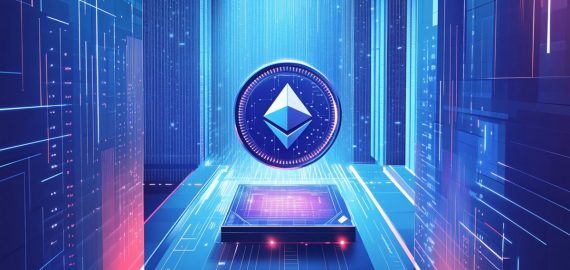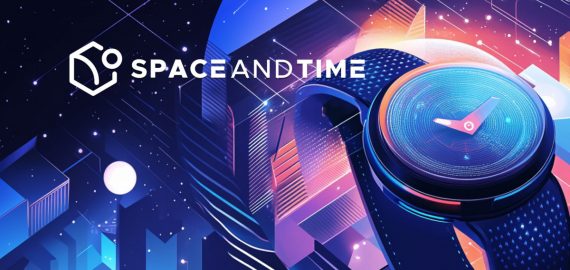Chainlink Payment Abstraction Goes Live: Network Fees Now Convert to LINK
- Chainlink’s Payment Abstraction simplifies user payments by auto-converting tokens into LINK, reducing friction and boosting efficiency.
- Aave’s integration of SVR with Payment Abstraction enables MEV value sharing and sets up future LINK staking rewards.
The Chainlink Network has officially rolled out Payment Abstraction on mainnet to cut out service payment issues. The idea is simple: let users pay with whatever tokens they already have and convert those automatically into LINK—the native token of the Chainlink ecosystem. This brings automation, simplicity, and less friction to a system that was previously more complicated than it needed to be.
We’re excited to announce Chainlink Payment Abstraction is officially live on mainnet, enabling user fees to be converted into LINK.
Network fees generated from Chainlink SVR—including @aave 's usage of SVR—will now be converted to LINK.
🧵👇 https://t.co/ZXkRSqJ9c6
— Chainlink (@chainlink) March 31, 2025
The tech under the hood is already running with a clear first use case: Chainlink Smart Value Recapture (SVR), which recently went live with Aave. SVR is aimed at capturing some of the valuable Maximal Extractable Value (MEV) that gets generated when DeFi platforms use Chainlink Data Feeds. Now, instead of letting that value slip away to third parties, a portion is recaptured and split between Aave and the Chainlink Network.
Aave kicked off the launch by integrating SVR into its V3 deployment on Ethereum Mainnet. For the first six months, Aave gets a generous 65% of the SVR fees, while Chainlink gets the remaining 35%. Aave’s share goes directly to its DAO in the same asset it was collected in. The Chainlink portion, on the other hand, flows through the newly launched Payment Abstraction system and gets turned into LINK.
One Chain, One Token: Streamlining 40+ Blockchain Rewards
Historically, Chainlink node operators have had to claim rewards across more than 40 different blockchain networks. That’s 40 separate claim transactions—time-consuming and expensive. With Payment Abstraction now live, the plan is to consolidate those rewards onto a single chain: Ethereum. The change begins with rewards for CCIP node operators.
This unified reward system uses the new Reserves contract on Ethereum, simplifying reward collection and saving on both time and costs. Once fees are converted to LINK, they’re deposited into that Reserves contract, ready to be withdrawn by service providers.
As the network grows, additional Chainlink services beyond SVR are expected to plug into this payment model. That means more automated conversions, more stakers involved, and fewer operational hurdles.
Chainlink has also confirmed that the Payment Abstraction infrastructure underwent extensive security audits. Firms like Sigma Prime and Trail of Bits reviewed the code, and even a public Code4Rena contest with a $100K prize found no critical or high-severity bugs.
Stakers Eye Future Rewards from SVR Conversions
Currently, the LINK fees collected via SVR that aren’t secured by staking go toward paying node operators who provide Chainlink Data Feeds. But once the relevant SVR service gets secured by Chainlink Staking, those same fees will start flowing directly to LINK stakers—both node operators and the broader community.
And when it gets to that stage, half of the SVR-converted LINK will be used to support the sustainability of the existing staking rewards rate. The other half will go to stakers, split evenly between the node operator pool and the community pool.
For now, stakers don’t need to do anything new. The LINK rewards will show up in the same way staking rewards always have. Some movement of funds might happen between internal contracts, but there’s no action required by participants. More details on how these SVR-linked rewards will roll out are expected soon.
Avertissement : le contenu de cet article reflète uniquement le point de vue de l'auteur et ne représente en aucun cas la plateforme. Cet article n'est pas destiné à servir de référence pour prendre des décisions d'investissement.
Vous pourriez également aimer
La mise à niveau de Pectra est lancée, P2P.org la qualifiant de « changement de donne pour Ethereum »
En bref Ethereum, la deuxième plus grande blockchain et foyer de contrats intelligents, a déployé avec succès sa mise à niveau « Pectra » sur le réseau principal le 7 mai 2025.

Tim Beiko, PDG d'Ethereum, propose des améliorations de gouvernance pour simplifier la planification des hard forks et la sélection des fonctionnalit
En bref Tim Beiko a présenté une proposition visant à affiner la structure de gouvernance du réseau, notamment dans la manière dont les fonctionnalités clés, appelées « Headliners », sont sélectionnées pour les mises à niveau hard fork.

Microsoft va intégrer le protocole A2A de Google dans Azure AI Foundry et Copilot Studio, permettant ainsi la collaboration entre agents d'IA multipl
En bref Microsoft prévoit d'intégrer le protocole Agent2Agent de Google dans Azure AI Foundry et Copilot Studio, dans le but de faciliter la collaboration entre les agents d'IA sur différentes plates-formes, clouds et environnements organisationnels.

Space And Time est disponible sur le réseau principal pour prendre en charge la prochaine génération d'applications cryptographiques basées sur les d
En bref Space and Time, l'infrastructure blockchain axée sur les données vérifiées par ZK, a lancé son réseau principal public sans autorisation.

